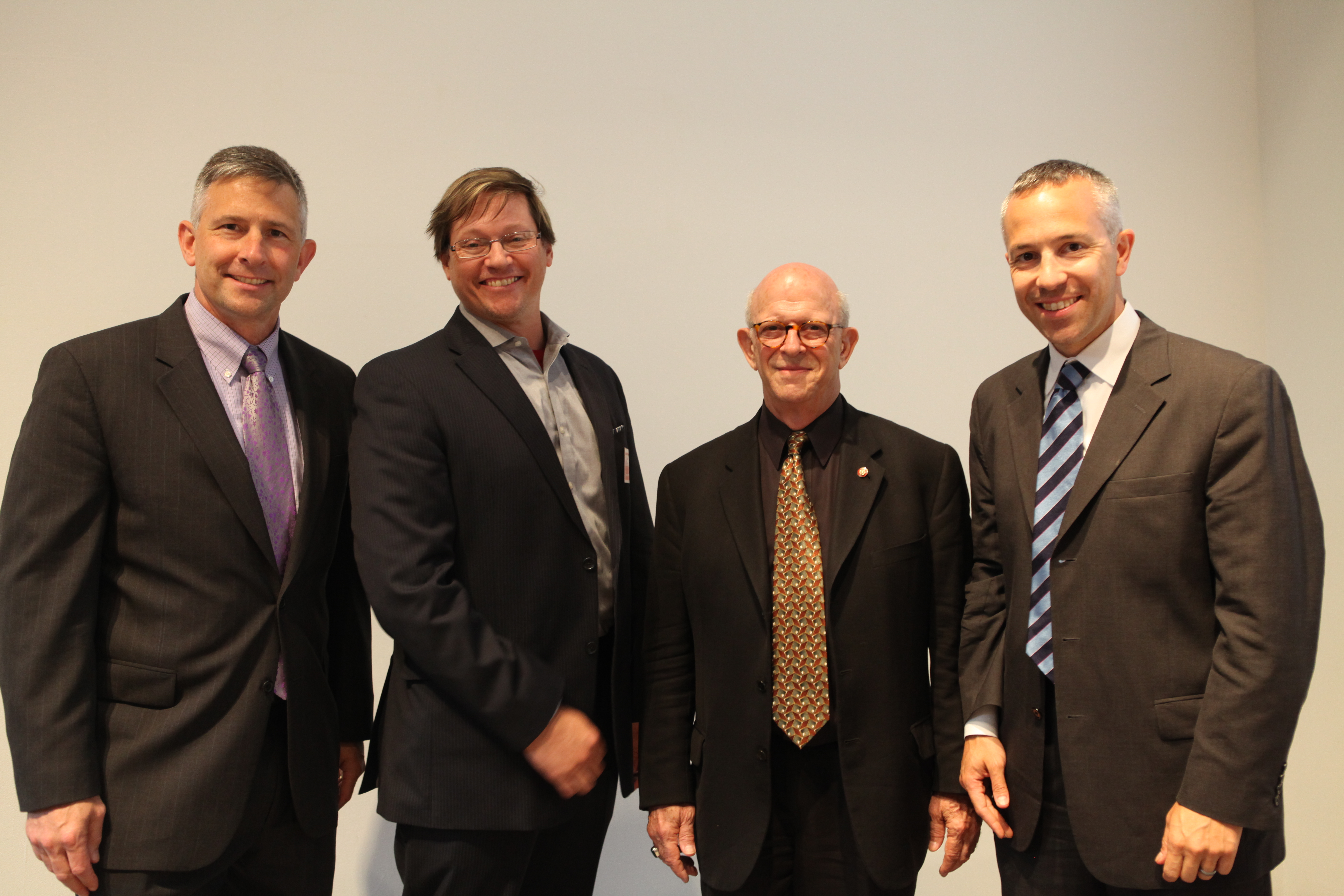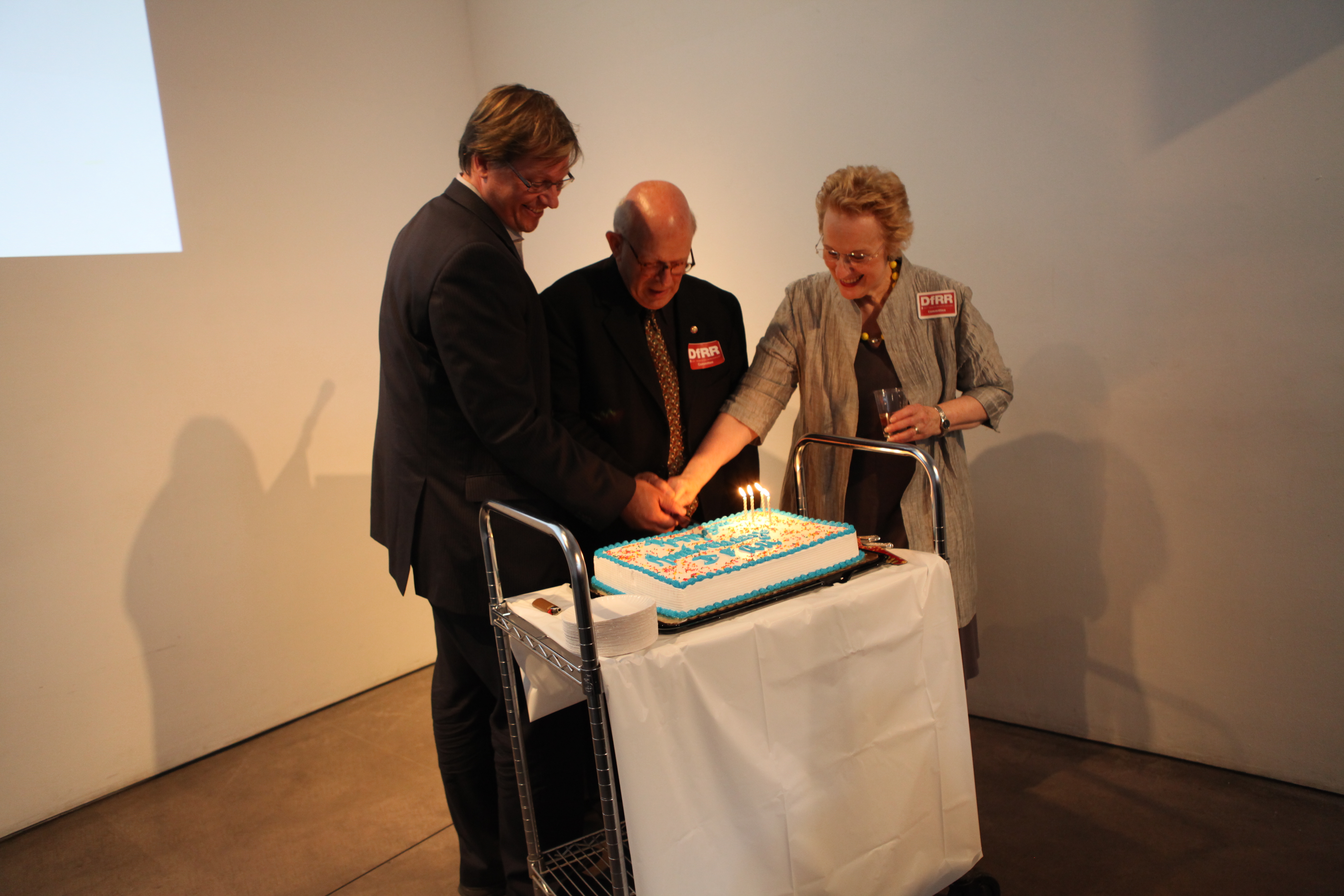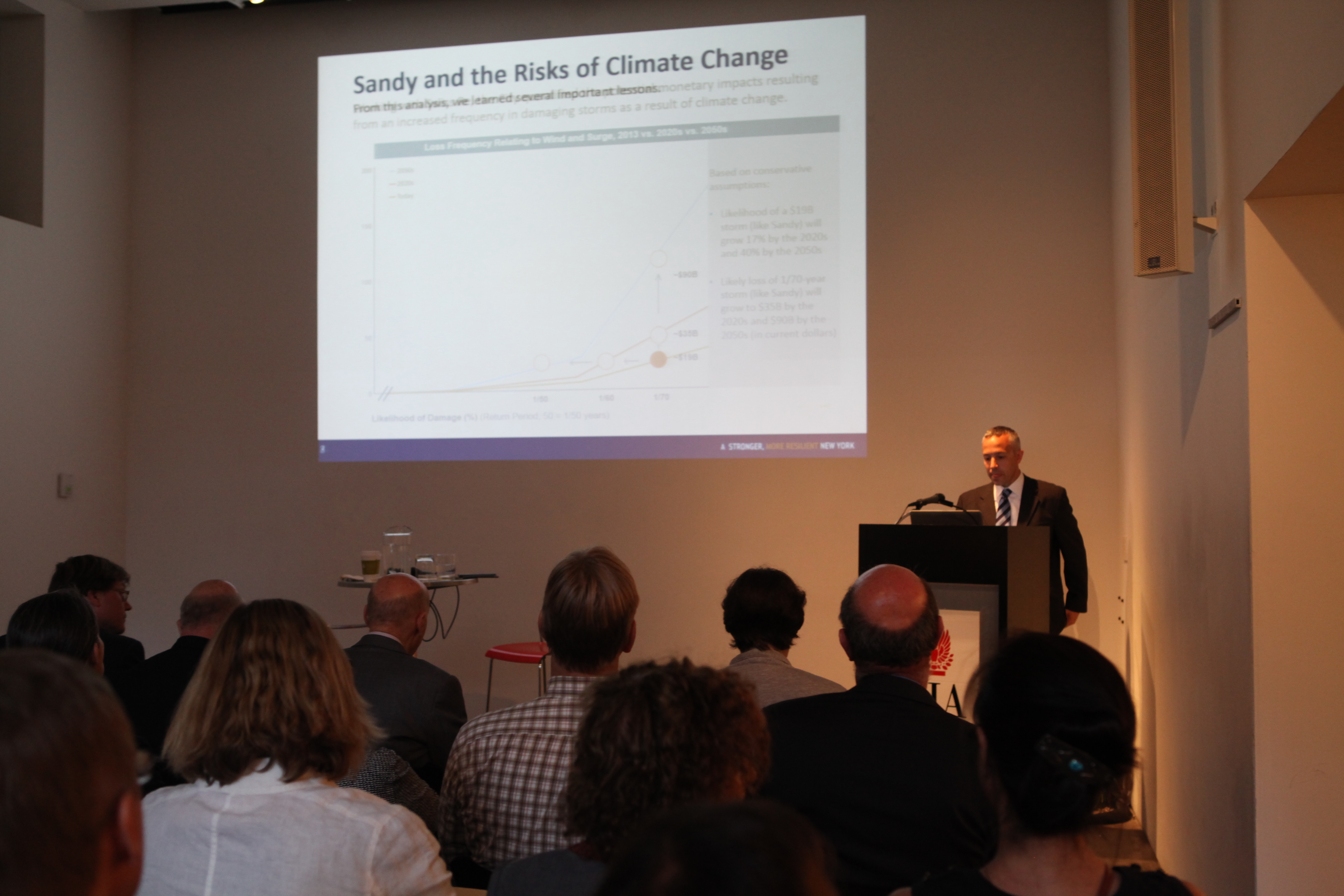by: Graham Higgins LEED AP
On 6.11.14 the AIANY Design for Risk and Reconstruction Committee (DfRR) hosted Daniel Zarrilli, PE, to update the design community on New York’s progress in becoming a more resilient city. Zarrilli, the director of the Mayor’s Office of Recovery and Resiliency and acting director of the Mayor’s Office of Long-Term Planning and Sustainability, leads the city’s efforts to confront the realities of extreme weather events intensified by climate change. Through strategies such as strengthening coastal protections, upgrading buildings, improving infrastructure, and encouraging the design of safer and more vibrant neighborhoods, Zarrilli and his departments have helped shape a New York increasingly capable of addressing future environmental events. Zarrilli, who has served under both the Bloomberg and de Blasio administrations, plays a key role in crafting innovative strategies for some of New York’s most challenging issues. His twin responsibilities place him at the center of New York’s sustainability and resiliency agendas, blending the two into a single approach to combat future extreme weather events. Two key themes emerged: the costs of inactivity provide a direct economic impetus for acting against the impacts of extreme weather, and a blended approach of design strategies that combines multiple layers of defense is required to ensure New York’s future success.
The event’s moderator, John Boulé, PE, senior manager for Priority Project Delivery at Parsons Brinkerhoff, arguably had the quote of the night in reference to the U.S. Department of Defense’s budget: “A billion dollars is not real money.” Boulé’s point was clear, regardless of political inertia and skepticism: the impacts of extreme weather events are real, tangible, and will be exceedingly expensive unless we act now. Decisions that are made now have the potential to drastically mitigate future costs, but inactivity will generate staggering economic blows to communities throughout the U.S. and globally. He argued that funding to mitigate these impacts could be made available if priorities and perspectives change.
The newly released Risky Business Report, “The Economic Impacts of Climate Change,” reveals that human-induced climate change is generating a set of specific and measurable impacts on our nation’s current assets and ongoing economic activity. Inaction is an inherently costly decision. Rising seas, increased damage from storm surge, and more frequent episodes of extreme heat will influence communities throughout the U.S. in a variety of economically, environmentally, and socially detrimental ways. The Risky Business Report combines an innovative macroeconomic assessment of national impacts with a regional approach to address the ramifications of inactivity at the local level. In New York, assuming current levels of emissions and climate change preparedness, by the end of century storm costs are projected to rise to between $4.4 and $5.8 billion annually, an increase of 165 to 250% from today’s levels; however, effective responses can mitigate these costs. As FEMA has revealed, roughly every $1 spent on hazard mitigation now yields $4 in savings in the future. In the context of the roughly $19 billion in damages Superstorm Sandy levied upon New York City, it is clear that the costs of extreme weather, intensified by climate change, cannot be ignored.
Fortunately, New York is exploring an array of strategies to combat rising water levels and storm surges through a layered defensive approach. Throughout the U.S., the dominant paradigm in the design of extreme weather infrastructure, particularly of the water-related variety, has been large-scale “grey infrastructure.” This design approach is focused on expensive structures engineered to aggressively target a single area of concern, such as large storm surge barrier. These structures offer potential solutions, but are not necessarily the most cost-effective or successful options. The Big U, for example, recently funded by a $335 million federal grant issued by HUD to protect New York from future sea level rise, not only absorbs storm water and surges in an extreme event, but also provides a set of passive amenities when not serving a defensive role. These benefits directly impact the health and wellbeing of local residents, promoting a higher quality of life at less expense than an overpriced, overpowered, and over-engineered piece of grey infrastructure. Strategies such as the Big U merge berms, bridges, salt tolerant vegetation and landscaping, and deployable storm surge barriers into dynamic extreme weather strategies that simultaneously provide distinctly beneficial civic amenities.
Ultimately, there is no silver bullet in addressing the future impacts of extreme weather events. As Zarrilli and Boulé agreed, a lexicon of complementary strategies must be applied to achieve the most cost effective, quality-of-life improving, and environmentally responsible outcomes. A truly successful extreme weather strategy is holistic, linking a range of complementary features into a coherent disaster mitigation approach.
While the economic considerations and the design methodologies capable of curbing the impacts of extreme weather events are key factors, the social component of these events must also be taken into consideration. The $19 billion in damages attributed to Superstorm Sandy can be mitigated through thoughtful and well-managed approaches. But it is important not to lose sight of climate change’s human dimension. During Sandy, 44 lives were lost and communities were destroyed.
As recently featured in James Cameron’s critically acclaimed series Years of Living Dangerously, New York’s Staten Island suffered severe inundation and a staggering 24 casualties. In Tottenville, the Dresch household was enveloped in 15 feet of storm surge, leaving Pat Dresch to forever mourn the loss of her husband George and their 13-year-old daughter Angela. The Dresch family’s story serves as a vivid reminder of extreme weather’s impacts and the sobering fact that climate change is increasing both in frequency and severity.
Strategies that effectively combat extreme weather events will be fundamental to our nation’s future success. With the economic considerations increasingly well-defined and disaster mitigation designs tested and ready, the final step is overcoming political inertia. It is clear that the environment and the climate ignore political ideology and geography. As President Ronald Reagan himself argued in his 1984 State of the Union address, “[the] [p]reservation of our environment is not a liberal or conservative challenge, it’s common sense.” It is time to transcend today’s partisan divide and work collectively to solve what is arguably the greatest issue of our time through effective strategies that can be implemented in a cost-effective manner.
Graham Higgins, LEED AP, is Director of Project Resiliency at Cirgenski+Capalino.
Event: Road to Resiliency: The State of Recovery, Now and in the Future, with Daniel Zarrilli
Location: Center for Architecture, 06.11.14
Speakers: Daniel Zarrilli, PE, Director , NYC Mayor’s Office of Recovery and Resiliency, Acting Director, NYC Mayor’s Office of Long-Term Planning and Sustainability; John Boulé, PE, Senior Manager for Priority Project Delivery, Parsons Brinckerhoff; Lance Jay Brown, FAIA, 2014 President, AIANY, and Founding Co-chair, AIANY Design for Risk and Reconstruction Committee (welcome); and Illya Azaroff, AIA, Founding Co-chair, AIANY Design for Risk and Reconstruction Committee (introduction)
Organizers: AIANY Design for Risk and Reconstruction Committee










